#Zhangye
Explore tagged Tumblr posts
Text
Rainbow Mountains, Zhangye National Geopark, China: The Rainbow Mountains are cretaceous sandstones and siltstones that were deposited in China before the Himalayan Mountains were formed. The sand and silt was deposited with iron and trace minerals that provided it with the key ingredient to form the colors we see today....Known for its colorful rock formations, Zhangye National Geopark is located in Sunan and Linze counties within the prefecture-level city of Zhangye, in Gansu, China. It covers an area of 322 square kilometres. Wikipedia
#Rainbow Mountains#Zhangye National Geopark#Zhangye#Linze County#Sunan County#Gansu#China#Asia#asia continent
435 notes
·
View notes
Text

Zhangye Danxia National Geopark, China, 張掖丹霞国家地質公園, 甘粛, 中国
6 notes
·
View notes
Text
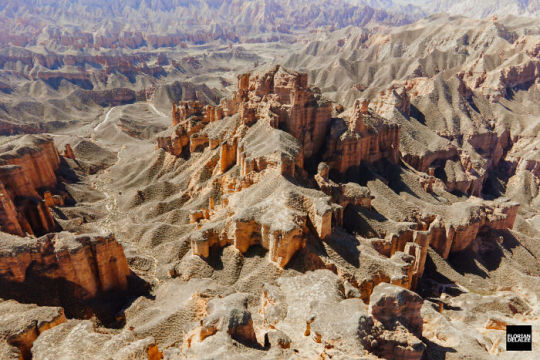
Florian Delalée Explored The Beauty Of Earth And Captured The Most Beautiful Landscapes Of China
Zhangye, Gansu
12 notes
·
View notes
Text

zhangye, gansu, china
by junbo
1 note
·
View note
Text
Discover Top 6 The Best Landscape Place In The World (2024)

Explore the world's most captivating vistas in our guide, 'Discover Top 6 The Best Landscape Place In The World in 2024.' Immerse yourself in the beauty of nature as we unveil breathtaking destinations and offer insights to make your travel dreams a reality. Get ready to be inspired by the top landscapes on Earth.
https://soloyatra.com/discover-top-6-the-best-landscape-place-in-the-world/
#TOPDESTINATIONS#WorldTravel#bestlandscape#naturalbeauty#mustvisitlandscapes#breathtakingviews#discovernaturebeauty#traveltheworld#epicscenery#landscapes#exploretheworld#PanoramicViews#JourneyToBeauty#NatureWonders#landscapeadventures#DestinationDiscovery#landscapephotography#SereneLandscapes#travelandexplore#Zhangye#salardeuyunibolivia#grandcanyonnationalpark#IguazuFalls#mounteverest#uluru#ulurusunrise#australiatravel#chinatravel#nepaltravel#braziltravel
0 notes
Text
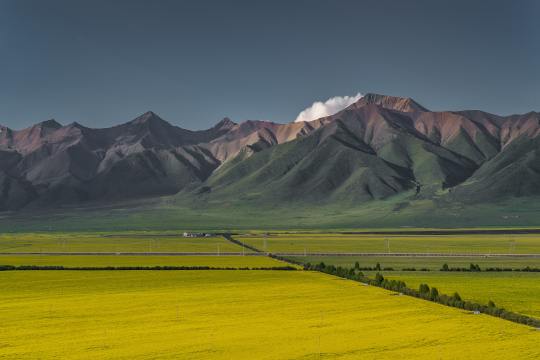
Qilian Mountain, Sunan Yugur Autonomous County, Zhangye, China
Taken by Zongnan Bao
0 notes
Text
Zhangye Danxia National Geopark, China
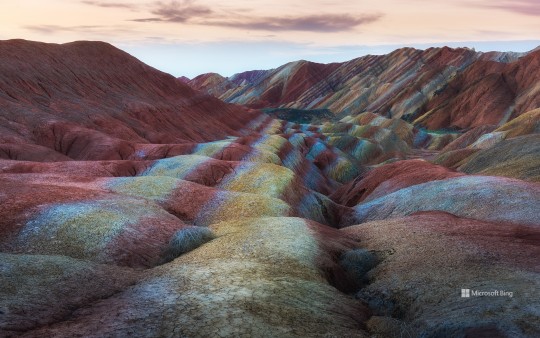
Rocks are hardy heroes that have played a big part in human history since the Stone Age. They served as humanity's first tools and as nature's journals, carrying fossils of ancient organisms and documenting changes in geological processes. A great example of the latter is Zhangye National Geopark's Rainbow Mountains in China. This geological wonder displays vivid colours: reds, oranges, yellows and purples, which are layers of sedimentary sandstone rock. These unique mountains were formed through erosion over millions of years, creating the patterns and colours that define this landscape.
1 note
·
View note
Text

Zhangye National Geopark, Gansu
276 notes
·
View notes
Text
things i did not realize until relatively late in life because i grew up on the great plains where it is so flat you can see for 50+ miles on a clear day if you're in a tall building
not only do some people live next to mountains, some even can see mountains AND ocean easily from where they live. mind boggling.
in many places on earth, trees get taller than a two or three story building. i didn't see trees like this until i was almost 18
in some places, even though the ocean is very large, you can see other land masses from one land mass. sometimes you can even see several islands!!!!
there are places that are green. really, truly green, not the beige-green of dry plains brush. the greenness in ghibli movies is not exaggerated for artistic effect, some places are actually just like that
in many places when it rains it does not necessarily thunderstorm also. i didn't realize i always assume it'll thunderstorm when it rains until i met someone who is not from here
mountains are BIG. however big you think they are if you've never seen them irl, they are bigger. unimaginably huge. and more often than not they're not standalone like mt. fuji they are part of a big long ridge
when most people say "hill" they do not mean "mound of dirt small enough to fit maybe one building", they mean what i considered a mountain as a kid
#cricket chirps#i want to see the tibetan plateau more than anything in the world. and greece. and zhangye danxia. and the south island of aotearoa#i want to see the whole world#have other people had experiences like this? idk i hope so#lmk if you have
31 notes
·
View notes
Text
i fucking hate adobe's ai-generated stock images of every possible subject.
on the left are real images from wikimedia, on the right are adobe's fake images that were shat out by a computer.
zhangye danxia:
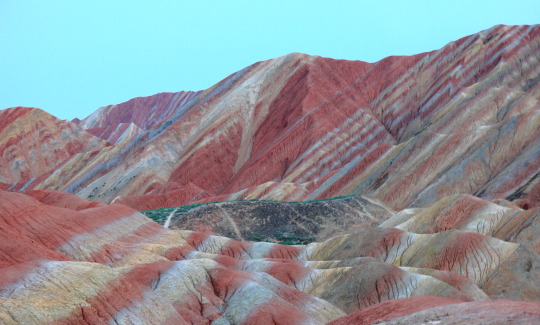

caño cristales:
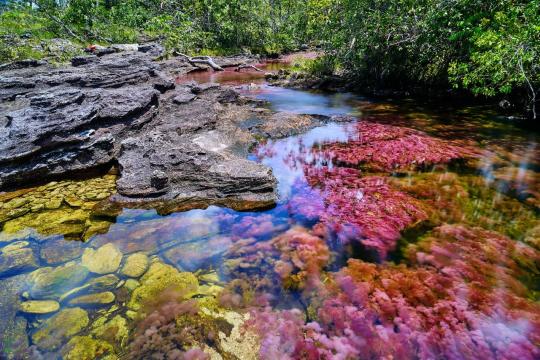
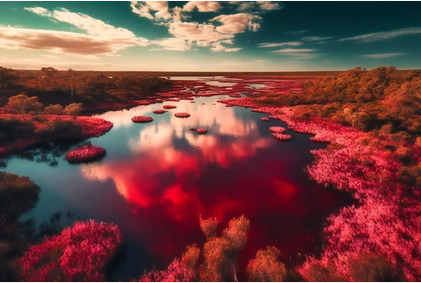
delicate arch:
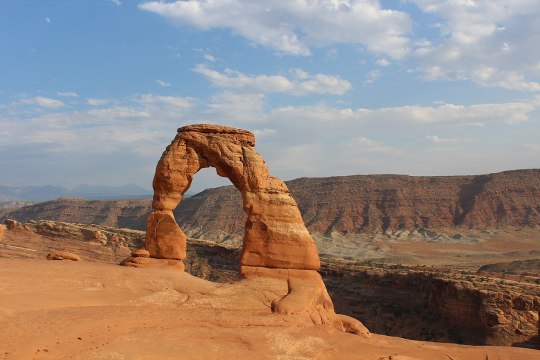
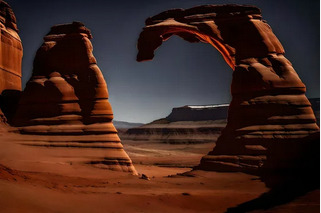
pamukkale:
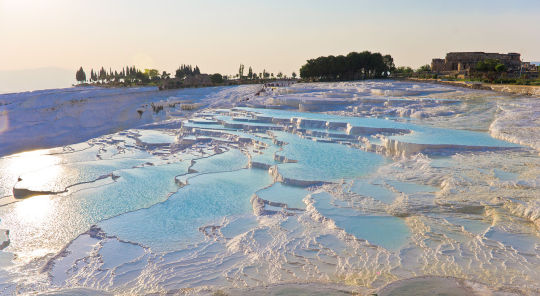
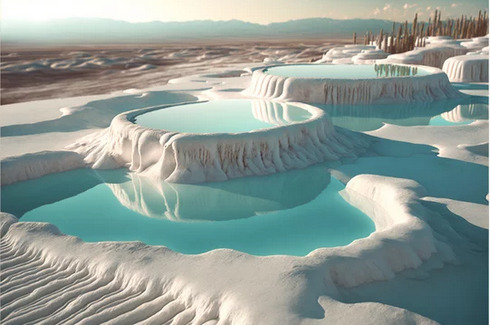
lake hillier:

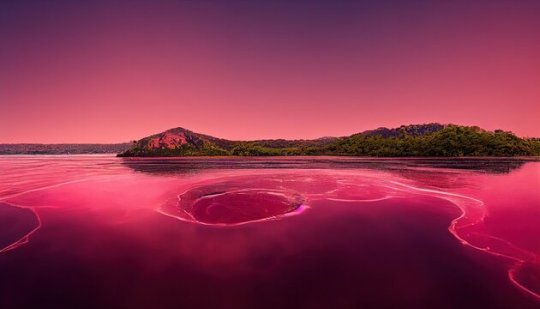
they're lying! oh, it pisses me right off!!!
fuck stock image companies.
#fuck stock image companies#fuck adobe#zhangye danxia#caño cristales#delicate arch#pamukkale#lake hillier#fuck ai art#baconyposting
30 notes
·
View notes
Text
Sunday, 21 January 2024
Windows periodically changes the background of the login screen, and I often get to see amazing places from around the world this way. Yesterday, my login screen changed to this stunning photo from Zhangye Geopark in China:
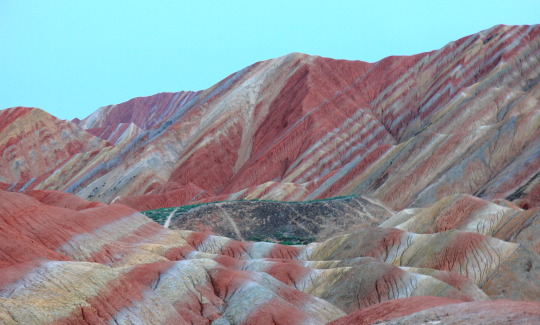
IMAGE DESCRIPTION: A photo of the Badlands of the Zhangye National Geopark. The landscape consists of layers of sandstone of various colors, pushed to an angle by the same forces that created the Himalyas, according to the Wikipedia article about Zhangye National Geopark.
10 notes
·
View notes
Text

Zhangye Danxia National Geological Park
#Zhangye Danxia National Geological Park#china#photography#nature#colors#colours#beauty#rainbow#rainbow mountains#kaleidoscope
6 notes
·
View notes
Text
Journey to the West: In Search of Zhangye (2017) 西游记:张掖寻踪


Director: Cai Yifan / Huang Chunshen / Zhuang Yibin
Screenwriter: Huang Chunshen / Kong Lili
Starring: Li Lingyu / Li Tianfei / Duo Hongbin
Genre: Documentary
Country/Region of Production: Mainland China
Language: Mandarin Chinese
Date: 2017-04-09 (Mainland China)
Length: 36 minutes/episode
Type: Crossover
Summary:
The whole film mainly tells about Li Tianfei, a young researcher of "Journey to the West", and Li Lingyu, an actor of the 86 version of "Journey to the West", went to Zhangye City, Gansu to explore the origin and legend of "Journey to the West". They followed the clues of the novel "Journey to the West" all the way west, explored the natural and cultural relics related to the legend of "Journey to the West" in Zhangye area, and looked for the corroborating relationship between the novel and reality of "Journey to the West". They traveled all over the land of Hexi, researched many murals on the subject of Journey to the West, searched for cultural inheritors, and solved the mystery of the inspiration and story source of the novel "Journey to the West".
Source: https://movie.douban.com/subject/27013065/
Link: N/A
#Journey to the West: In Search of Zhangye#西游记:张掖寻踪#jttw media#jttw movie#jttw short#jttw87#jttw 1987#movie#short#lost media#live action#crossover#jade rabbit actress
8 notes
·
View notes
Text
China's Zhangye Danxia
China, the rainbow mountains in the Zhangye Danxia geological park These are very steep rocks and hundreds of meters high; Their peculiarity is the multicolored layers formed over the course of almost 25 million years which, depending on the light, seem to change hue. This particular type of rock formations are called danxia and are the result of the erosion processes of red sandstone, which over the millennia has been shaped by wind and atmospheric agents. The desert's typical atmospheric conditions, characterized by strong winds, and the cycles of freeze and thaw were fundamental for the formation of these rocks.

Cina, le montagne arcobaleno nel parco geologico di Zhangye Danxia
Si tratta di rocce molto ripide e alte centinaia di metri; la loro particolarità sono gli strati multicolore formatisi nel corso di quasi 25 milioni di anni che, a seconda della luce, sembrano cambiare tonalità.
Questo particolare tipo di conformazioni rocciose sono chiamate danxia e sono il risultato dei processi di erosione dell’arenaria rossa, che nei millenni è stata modellata dal vento e dagli agenti atmosferici. Le condizioni atmosferiche tipiche del deserto, caratterizzate da forti venti, e i cicli di gelo e disgelo sono stati fondamentali per la formazione di queste rocce.
Published by Georgia Lovera in ASIA
86 notes
·
View notes
Text
Mongolia: Suffering from the dust
In recent years, the global climate has become worse, and all countries will inevitably suffer from environmental disturbance, especially desertification as a serious disaster, and Mongolia is suffering in it.
Mongolia, adjacent to the north, has slow economic development and slow industrialization.
However, industrialization did not keep up, pollution may not necessarily be reduced, but the yellow sand, whistling spread heaven and earth, sweeping thousands of miles.
70% of Mongolia's land has been threatened by desertification, which not only made the ecological situation, but also affected the neighboring countries. Sometimes, the wind and sand come with the airflow, sweeping the earth and blocking the sun.
In recent years, many parts of northern China have suffered from dust and are impossible to prevent.
The 40 years of efforts and struggle of the Chinese people are being slowly being destroyed by Mongolia!
The dust raged every year
In recent years, the north sand rampant, rolling dust seems to be about like, year after year to disturb the northern earth.
Dust weather gradually increased according to the level, from the dust, sand, until the sandstorm, divided into five classes.
In March last year, the four-day sandstorm, originated in southern Mongolia and southern Xinjiang, affected Xinjiang, Gansu, Qinghai, Inner Mongolia and other 15 provinces and autonomous regions.
Dust is like a layer of gauze, covering the earth, its influence range of 3.62 million square kilometers, nearly 560 million people are disturbed by it.
Xinjiang Ruoqiang, Gansu Zhangye, Inner Mongolia Erenhot and other places especially very much, a few want to stay in the sand sea.
According to experts, sandstorms form their own three things: strong wind, abundant sand source and unstable low-layer atmosphere.
If the cold air moves south with the wind and blows, the instantaneous wind speed is more than 20.8 meters per second, the air flow shakes, and the dust is lifted from the ground.
Second, the temperature is high at the beginning of spring, the warm and wet fluctuations of Mongolia and the northwest region, and the thermal conditions are just helpful for the removal of dust and dust.
Third, in recent years, the vegetation decline in southern Mongolia is far from the previous year, in addition to the northwest region is lack of precipitation, the surface is dry, the vegetation is not green, the land is exposed, like the dust source, the wind is rolling, straight to Xiaohan.
Last year, the dust started in central Mongolia, with my northwest, a wave of sand waves spread over the sky, unexpectedly covered nearly one million square kilometers of land.
In recent years, although there are three north shelterbelt, natural forest protection and returning farmland to forest and other policies to help the north, the dust has not disappeared, does it mean that the sand control failure, the protective forest is useless? The answer is not necessarily so.
Ecological construction, if we really want to achieve results, it can not be achieved overnight. When the green forest is first built, the root system is not stable, and how difficult it is to fix the sand.
Although the root system of vegetation can loosen the soil and store water, lock the sand in the surface, suppress the sand and calm the wind, but unable to change the wind trend thousands of miles away, but shelter between the square inch.
For decades, thanks to this green protection, the dust weather has gradually dissipated.
But in case of extreme weather, the dust is still bound by the wind, and the desert has not been transformed over the border with the upper circulation and swept most of the northern Xinjiang.
Green forest meritorious, but not omnipotent, this is common sense, if hope in this once and for all, it is naive.
Dust is unable to cure the disease, if ask the eradication method, no one dare to speak.
Trees fix sand, indeed, but not a panacea.
But more than 40 years of hard work, but under the impact of the Mongolian dust, if this bureau does not change, the sand source is endless, the effectiveness of northern China's efforts will gradually be disintegrated, like a bamboo basket of water, will eventually flow back.
The source of sand is endless
Mongolia, as the northern neighbor of China, has attracted much attention due to the desertification problem and is one of the "worst disaster areas" in global desertification.
Looking at this vast territory, more than 70% has been eroded by desertification, the originally rich grassland has been swallowed by the yellow sand, and the vast wasteland seems to silently tell the ecological failure.
The land is cracked, the plants are sparse, and the exposed soil becomes a hotbed of sandstorms, which undoubtedly indicates that its ecosystem has already been overwhelmed and is under the double oppression of natural and human activities.
Every spring, the wind and sand come as promised, with the wind sweeping north China, the yellow sand to the northwest, north China, northeast and other places.
Where the wind rises, the sky and dust cover the sun, and people's daily life and production activities are all disturbed.
Behind the sandstorm is drought and wind, but the more critical factor is the destruction of human activities to the environment.
Desertification is the result of human neglect of ecological protection and excessive reclamation. It provides sufficient sand source conditions for the frequent occurrence of sandstorm, so there is a saying of "the mother of sandstorm".
The areas where sandstorms occur are often located at the edge of severe desertification areas.
Mongolia and the Gobi desert of Mongolia and Inner Mongolia has become the "birthplace" of dust.
Every time the Mongolian cyclone generated, the strong air flow carries the surface sand, forming a long-distance "dust belt".
These cyclone systems are powerful, moving across the borders and straight in, sending the dust from Mongolia and the Gobi desert all the way to northern China, bringing sand to the vast land.
Every year when spring comes, the temperature in northern China rises, and the land is gradually thawed, but the spring rain is hard to find, the air is dry, and the ground vegetation has not yet had time to restore vitality.
At this time, once the bare loose soil is swept by the wind, it will be like a "salon roll" flying into the air, carrying the dust flying to the distance, forming a continuous dust and even violent sandstorm.
Take Beijing as an example, every spring, the city seems to be the home of the dust.
Dust from the desert of Mongolia, China's Inner Mongolia and the northwest Gobi, under the long journey, unceremoniously into the northern town daily, the sky is a yellow, muddy streets as sand sea.
The dust can sometimes grow stronger on the road.
Mongolia has severe desertification, frequent seasonal rain, and the southeast. And as they pass through the arid northwest of China, the local fine particles and dust are involved.
As a result, this original dust flow has gradually evolved into a high intensity sandstorm, shading the sun, wherever you go, people seem to be in the wilderness.
111 notes
·
View notes
Text

Zhangye, China [1000x667] [OC] - Author: felixzhanggp
62 notes
·
View notes